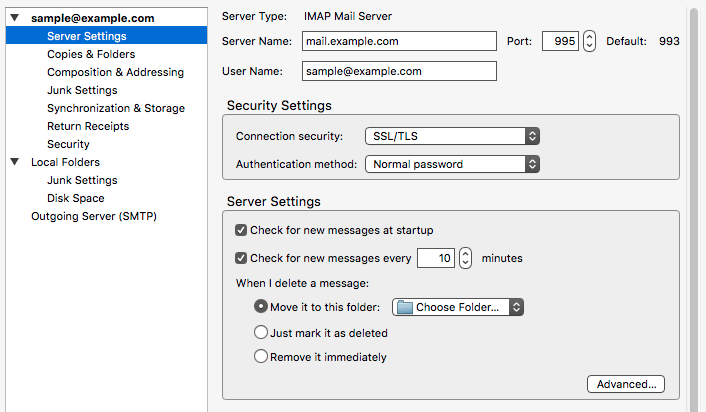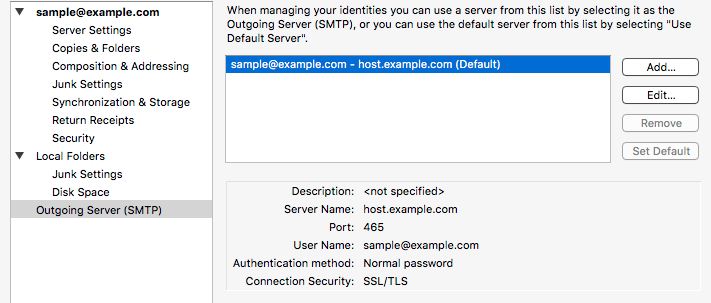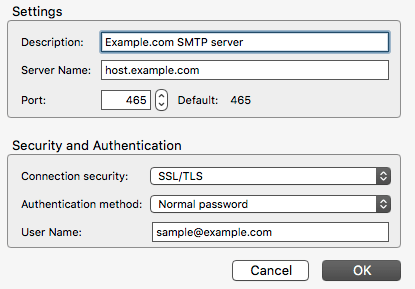How To Modify an Existing Email Account in Thunderbird
- How To Set Up a New Email Account in Thunderbird
- How To Modify an Existing Email Account in Thunderbird
- How to Subscribe to IMAP Folders in Thunderbird
Pre-Flight Check
- These instructions are intended specifically for setting up an email account in Mozilla Thunderbird 38.3.0 on Mac OS X 10.11.1.
- While the steps should be similar across platforms and operating systems, they may not necessarily apply to older versions of Thunderbird.
- For help with general email account settings, see How to Set up Any Email Client.
You can edit an email account that already has been configured in Thunderbird, for example should you decide to switch between non-SSL and SSL settings or change the server’s connection port. You change the connection type between standard (non-SSL) and secure (SSL) by changing the hostname and port for the incoming and outgoing servers.
To avoid data loss, please use caution any time you change an email account’s connection type or delete an email account. Removing an email account from a mail client also will remove all messages associated with it on the device and, specifically in the case of POP accounts that are not configured to retain mail on the server, there may be no way to recover those messages. If you have any doubt or questions, please feel free to contact Heroic Support® for guidance.
Step #1: Edit Incoming Server Settings
- To edit the incoming server, select your email address in the left pane and then click on View settings for this account in the main window.
- In the account settings window, click on Server Settings to update the Server Name and Port.

- Server Name
- SSL settings will use the server’s hostname (e.g., host.yourdomainname.com)
- Standard non-SSL settings will use the domain name (yourdomainname.com or mail.yourdomainname.com).
- Port
- SSL settings will use Port 993 for IMAP and Port 995 for POP3.
- Standard non-SSL settings will use Port 143 for IMAP and Port 110 for POP3.
- Server Name
Step #2: Edit Outgoing Server Settings
- To edit the outgoing server settings, click on Outgoing Server (SMTP) in the left pane, select your outgoing server and click the Edit button.

- You can edit the server name and port in the popup window.

- Server Name
- SSL settings will use the server’s hostname (e.g., host.yourdomainname.com)
- Standard non-SSL settings will use the domain name (yourdomainname.com or mail.yourdomainname.com).
- Port
- SSL settings will use Port 465.
- Standard non-SSL settings will use Port 587 (depending on your server configuration, you may be able to use Port 25 as well).
- Server Name
- Click on the OK button to save the outgoing server settings, then click on OK once more to exit the settings menu and begin using your email account with the new settings.
Related Articles:

About the Author: dpepper
Our Sales and Support teams are available 24 hours by phone or e-mail to assist.
Latest Articles
How to use kill commands in Linux
Read ArticleChange cPanel password from WebHost Manager (WHM)
Read ArticleChange cPanel password from WebHost Manager (WHM)
Read ArticleChange cPanel password from WebHost Manager (WHM)
Read ArticleChange the root password in WebHost Manager (WHM)
Read Article


